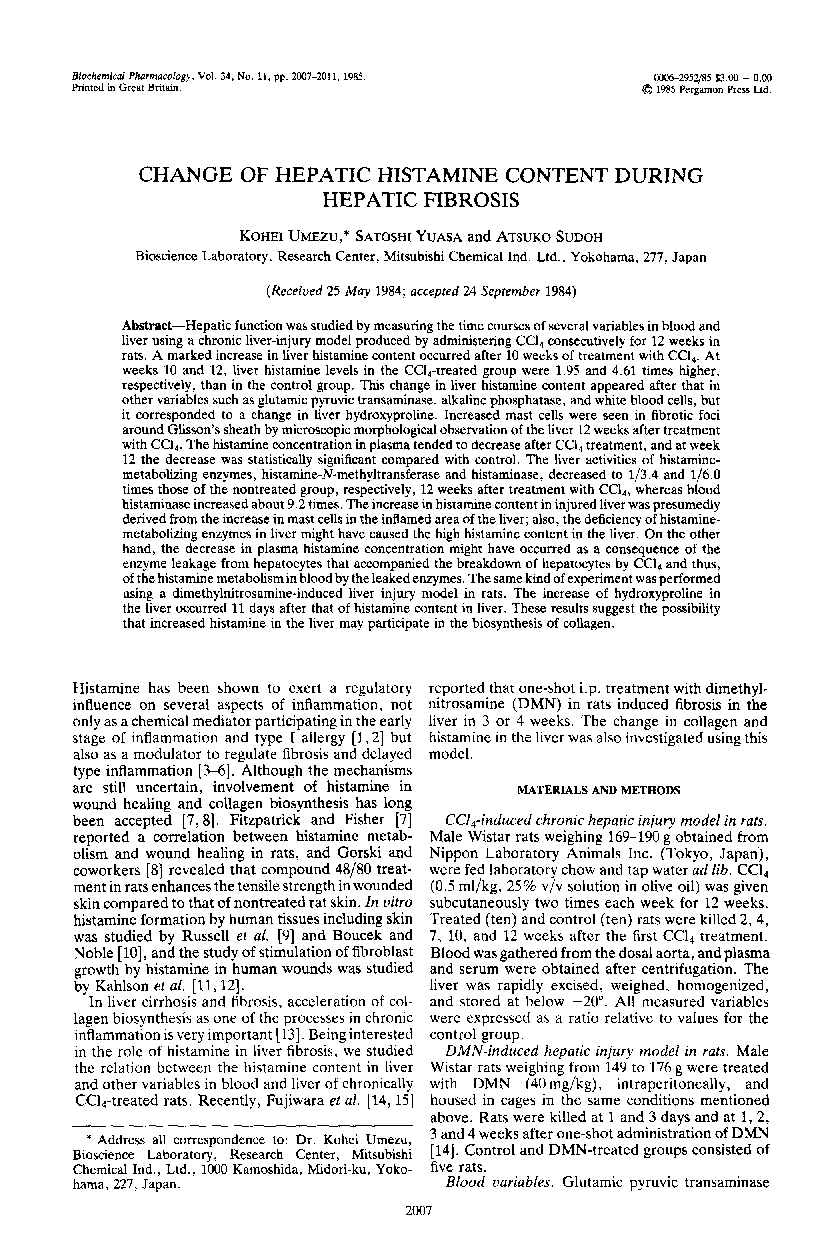| Article ID | Journal | Published Year | Pages | File Type |
|---|---|---|---|---|
| 2519690 | Biochemical Pharmacology | 2011 | 5 Pages |
Hepatic function was studied by measuring the time courses of several variables in blood and liver using a chronic liver-injury model produced by administering CCl4 consecutively for 12 weeks in rats. A marked increase in liver histamine content occurred after 10 weeks of treatment with CCl4. At weeks 10 and 12, liver histamine levels in the CCl4-treated group were 1.95 and 4.61 times higher, respectively, than in the control group. This change in liver histamine content appeared after that in other variables such as glutamic pyruvic transaminase, alkaline phosphatase, and white blood cells, but it corresponded to a change in liver hydroxyproline. Increased mast cells were seen in fibrotic foci around Glisson's sheath by microscopic morphological observation of the liver 12 weeks after treatment with CCl4. The histamine concentration in plasma tended to decrease after CCl4 treatment, and at week 12 the decrease was statistically significant compared with control. The liver activities of histamine-metabolizing enzymes, histamine-N-methyltransferase and histaminase, decreased to 13.4 and 16.0 times those of the nontreated group, respectively, 12 weeks after treatment with CCl4, whereas blood histaminase increased about 9.2 times. The increase in histamine content in injured liver was presumedly derived from the increase in mast cells in the inflamed area of the liver; also, the deficiency of histaminemetabolizing enzymes in liver might have caused the high histamine content in the liver. On the other hand, the decrease in plasma histamine concentration might have occurred as a consequence of the enzyme leakage from hepatocytes that accompanied the breakdown of hepatocytes by CCl4 and thus, of the histamine metabolism in blood by the leaked enzymes. The same kind of experiment was performed using a dimethylnitrosamine-induced liver injury model in rats. The increase of hydroxyproline in the liver occurred 11 days after that of histamine content in liver. These results suggest the possibility that increased histamine in the liver may participate in the biosynthesis of collagen.
